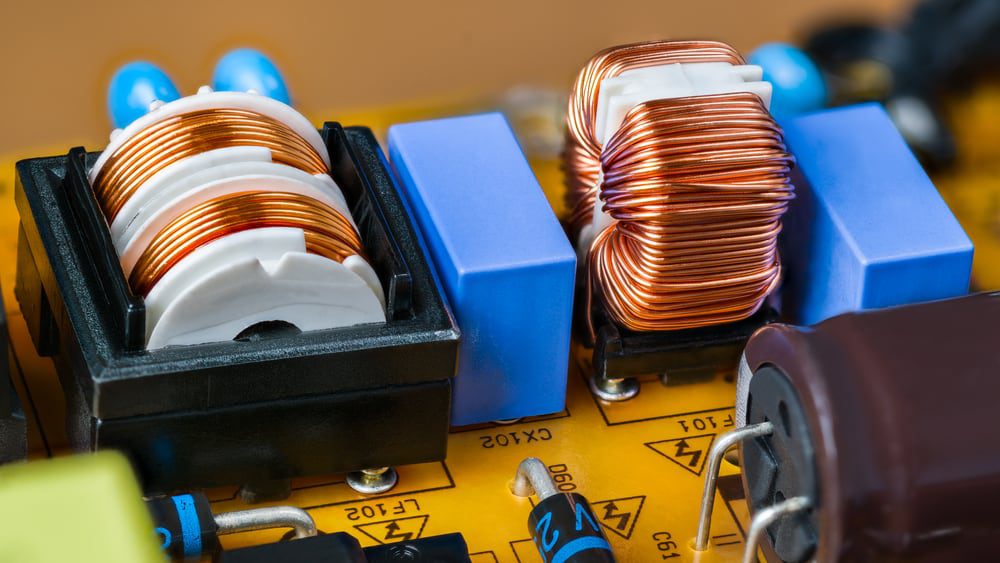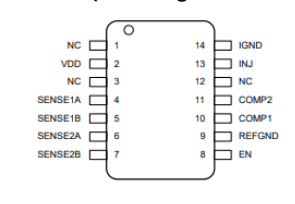
Active EMI filter: TI TPSF12C1/3 family of products can reduce the space occupied by passive components with noise-canceling.
Despite designers’ combined and concerted efforts to reduce electromagnetic interference (EMI) and susceptibilities (EMS) in their designs, shrinking boards and denser circuitry have made this a very challenging task. Instead, mitigation techniques should be applied to reduce the impact on sensitive signal pathways. Filters are one of the pillars of power and signal integrity due to their modularity. Still, typical implementations can loop back to the original design issue of board/enclosure space. So, how can designers leverage the power of filtering to accommodate smaller designs while simultaneously keeping EMC within acceptable limits?
One solution is to adapt the filter design from purely passive components to one incorporating an active circuit, which can be much more readily shrunk down. This method was only easier in theory until recently. Texas Instruments has produced the first stand-alone active EMI filters. TI’s TPSF12C1/-Q1 and TPSF12C3/-Q1 family of active EMI filter ICs expand the design possibilities by freeing up the additional room once dedicated to large passive components for single- and three-phase power systems.
Advantages of Active EMI Filtering |
|
|
Overall |
Better thermal management, reduced coupling due to reduction in component field strength and increased air gaps, simplified package/enclosure design. |
|
Mechanically |
Lower weight means reduced vibration/shock susceptibility and decreased cost. |
|
Electrically |
Better performance over a wider frequency band. |
|
Layout |
No additional magnetic components and an IC-centered filter afford greater flexibility during placement/routing. |
An Active EMI Filter: TI TPSF12C1/3 Products Offer Numerous Benefits
Filtering can come in many shapes and sizes, but a filter that affords more space to place and route is most valuable for layout designers working with small board or circuit areas. The common-mode (CM) choke used in passive EMI filters occupies a lot of board real estate that grows as EMC demands become more pronounced. Y-rated capacitors are also used along with CM chokes to provide CM noise attenuation in the SMPS.
However, these Y-capacitors also pose a risk to the touch-current safety ratings that apply in numerous applications. Although challenging for designers in a competition between board space, EMC, and safety, it’s easy to see why the layout space restrictions become tertiary to the latter two attributes.
Enter an active EMI filter: TI’s TPSF12C1/3 active EMI filter ICs can effectively reduce the inductance requirements of the CM chokes. Instead of assembling passive values for the maximum high-frequency response, the active circuit applies a signal of equal amplitude and opposite phase to mitigate the noise during operation. These falling passive values mean the components required for the SMPS require a much smaller package (and, therefore, land pattern) while still meeting the necessary EMI and safety criteria. The active filter design achieves this by sensing high-frequency noise on the power lines, which is canceled with noise-canceling currents coupled by an injection capacitor. A capacitive multiplicative circuit set by the gain and injection current can emulate the Y-capacitors.
This active filter family has additional features of note:
|
FEATURES OF TI TPSF12C1/3 AEF IC MODULES |
|
|
Features |
Description |
|
Integrated Line Filter |
Excellent matching due to on-chip circuitry; sums signals from multiple sense nets for common-mode noise signature. |
|
Compensation |
Integrated compensation facilitates a minimal number of external components for improved frequency response and stability. |
|
Enable |
Will shut down devices during operating periods when EMI filtering is unnecessary, reducing power draw. |
|
Supply UVLO Protection |
Emergency shutdown of IC to prevent unpredictable system behavior. |
Integrating TPSF12C1-Q1 Package into Design

Top-view of TPSF12C1-Q1 package pinout. All image rights belong to Texas Instruments.
With an understanding of the operation of the circuit, it’s time to move on to integrating the component into the system-level design with an accurate land pattern and layout for best practices.
- SENSE/INJ coupling: The INJ line must route a reasonable distance apart to prevent coupling on the SENSE nets.
- VDD/IGND bypass: A ceramic capacitor must be placed close to the two pins to minimize the power and return loop area. This step will reduce ripple and noise on the supply voltage, thus maximizing high-frequency performance.
- COMP1/2 sensitivity: Keeping discrete components close minimizes impedance and the potential for noise coupling on the lines. COMP2, in particular, is the negative input to the power amplifier and will be highly sensitive to noise.
- INJ considerations: A damping network of discrete components is utilized for added stability to prevent resonance between the injection capacitance and choke inductance. Place components close to the IC. Additionally, the INJ trace will need additional width for improved current-carrying capabilities.
Much like a passive filter, thermal routing will be a top priority for performance due to intended heat dissipation. A top-layer pour will keep the IC below its maximum operating junction temperature. Provide an ample array of thermal vias to move the heat away from the area and connect IGND and REFGND to the ground plane with multiple thermal vias.
To achieve the most efficient PCBA development, engineers and designers can utilize the TPSF12C1QEVM and TPSF12C3QEVM evaluation boards to analyze EMI performance for single phase and three phase applications, respectively. Additionally, the eval boards can be directly installed in the system solution.
Ultra Librarian Has Millions of Footprints Available: Cutting-Edge, Legacy, or Custom
As the first of its kind for an active EMI Filter, TI’s TPSF12C1/3 active EMI filter ICs provide a wealth of benefits for design teams looking to improve EMI performance and filter solution size, weight, and cost.
Additionally, even for design teams who may not initially seek out alternatives to passive EMI filter networks, this new IC allows for alternative design objectives in the case of continued passive component shortages.
For this land pattern and millions of others, new and old, design teams can use Ultra Librarian to quickly and easily move from the schematic to placement with the peace of mind of a fully-verified component library.
Working with Ultra Librarian sets up your team for success to ensure streamlined and error-free design, production, and sourcing. Register today for free.








